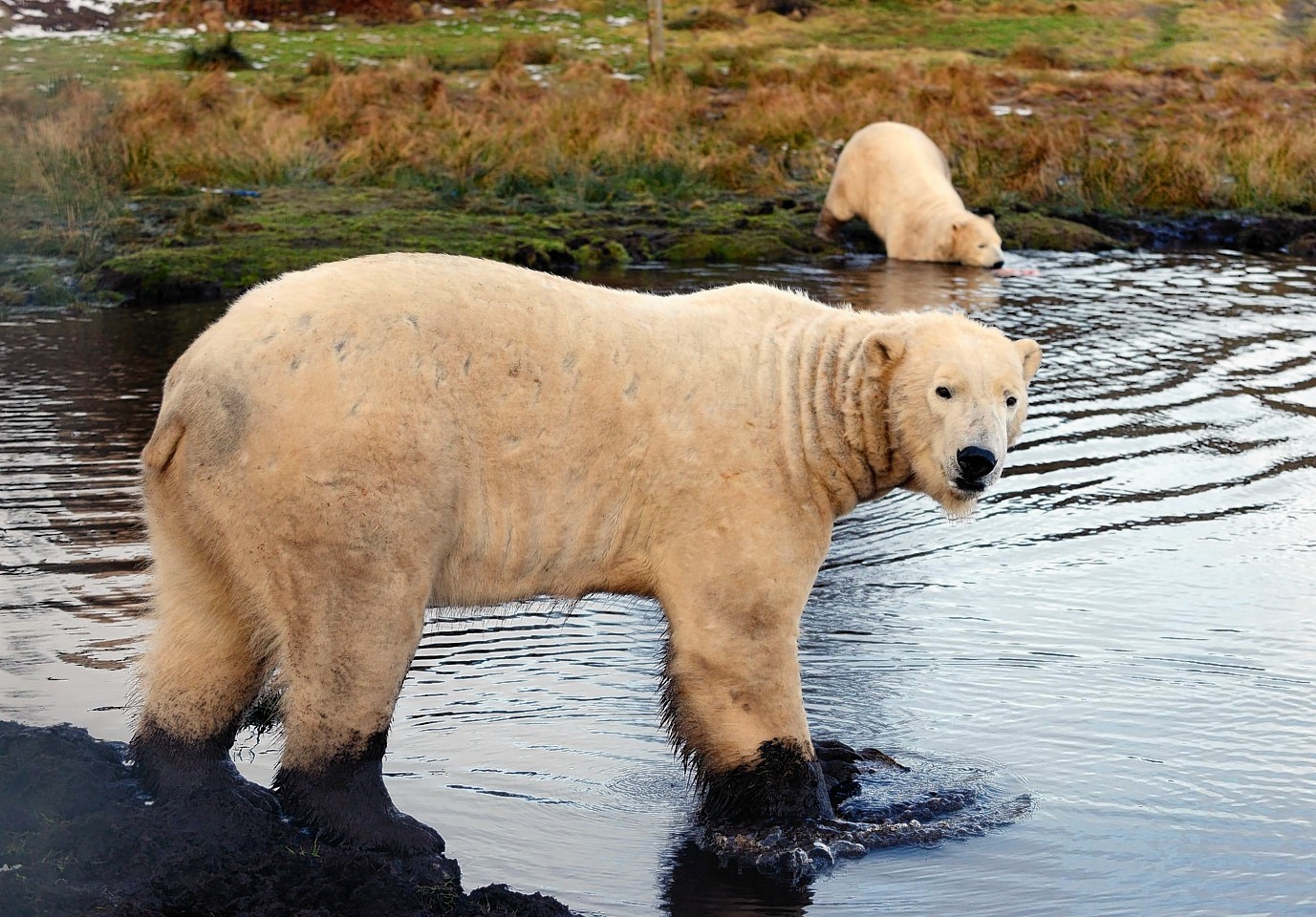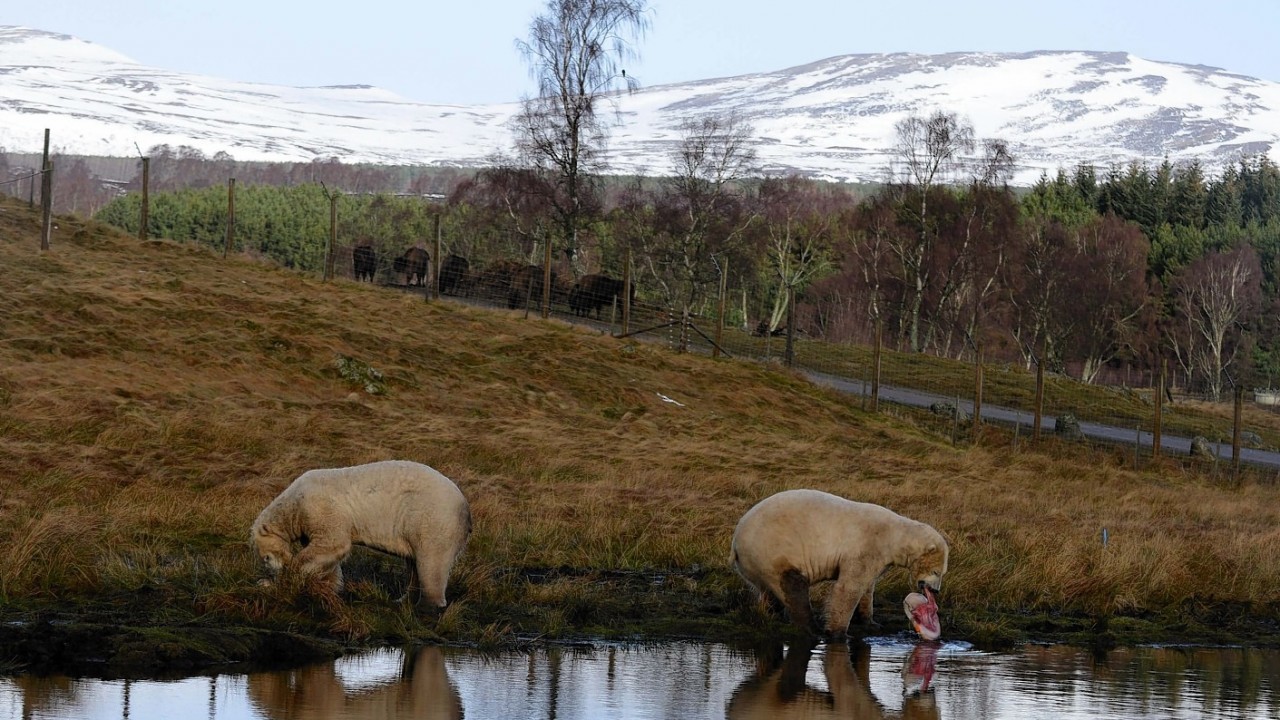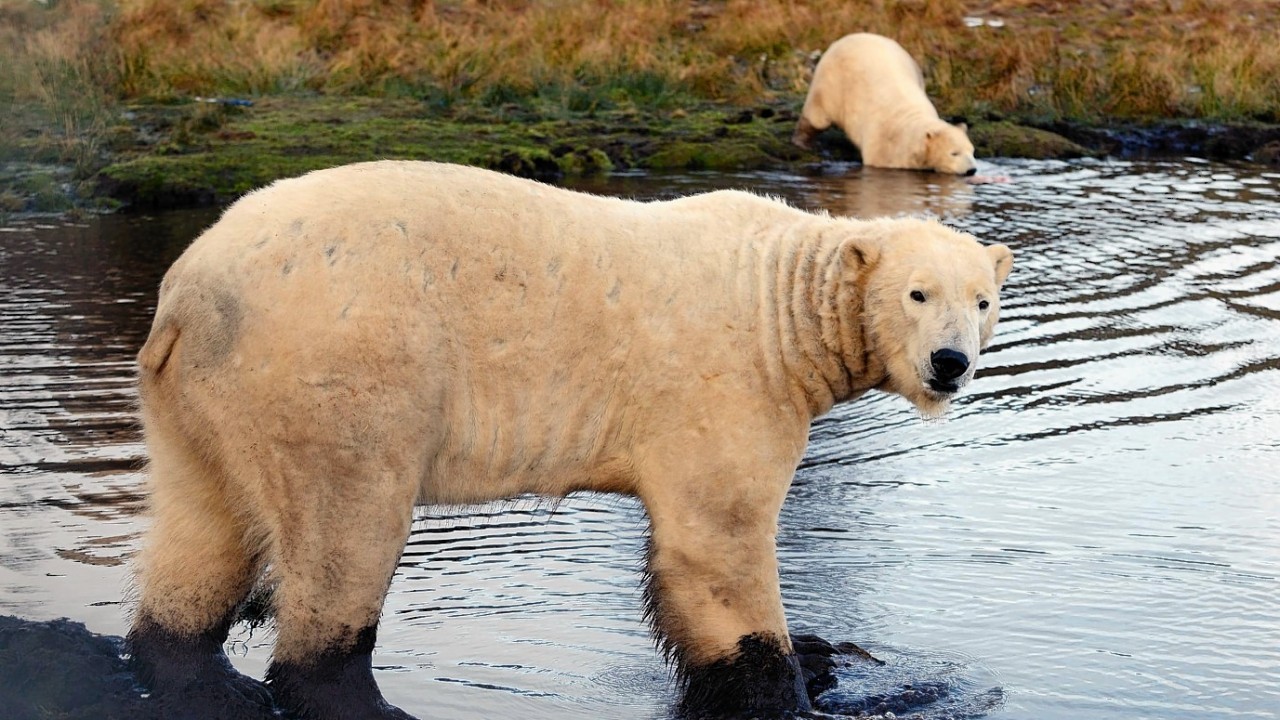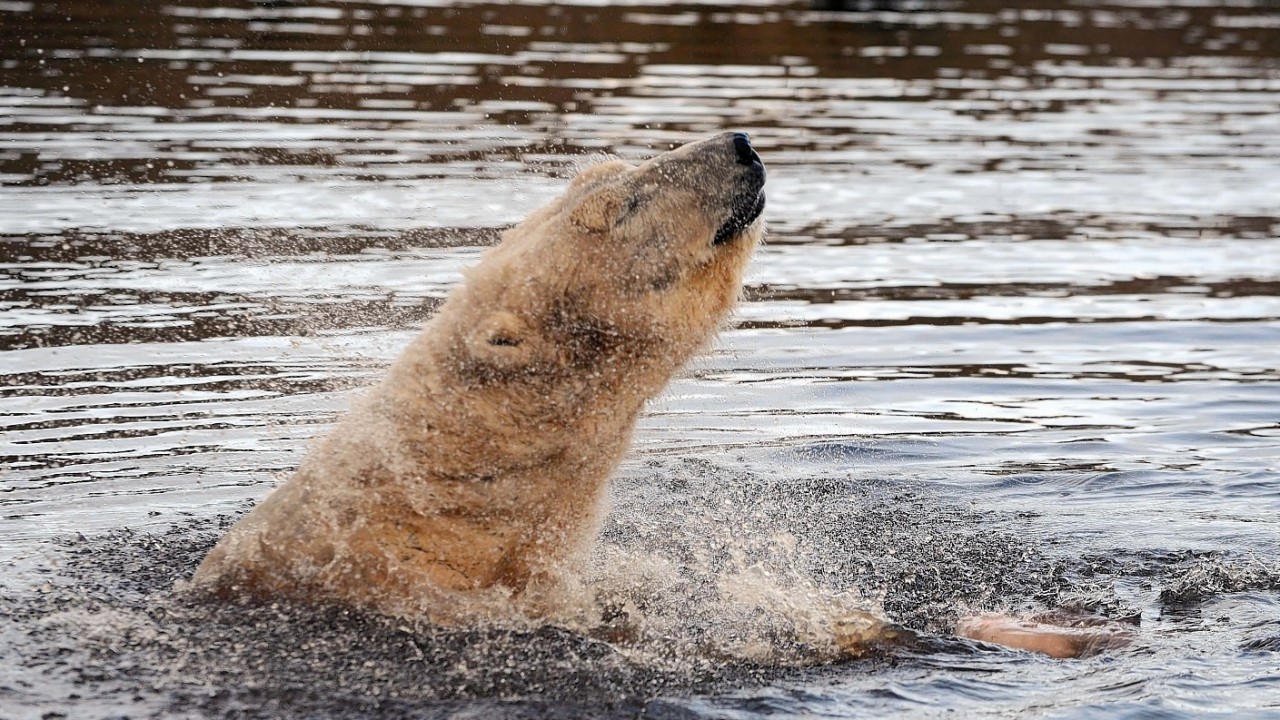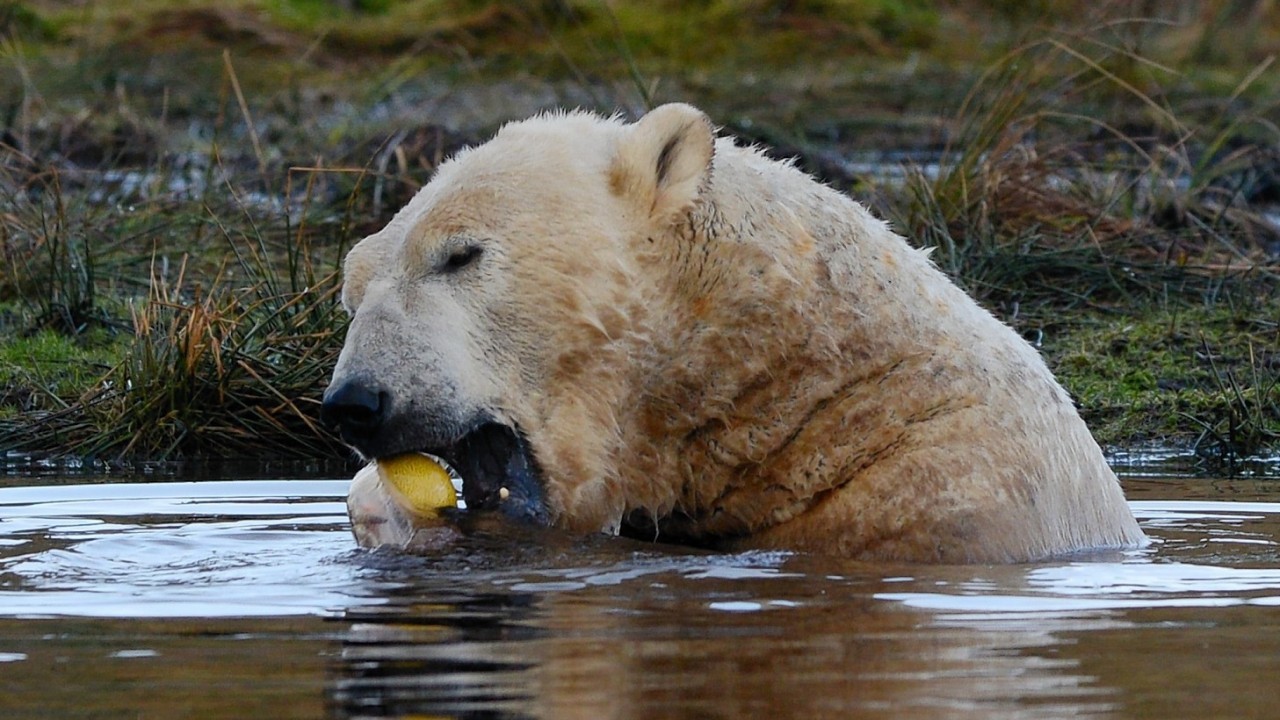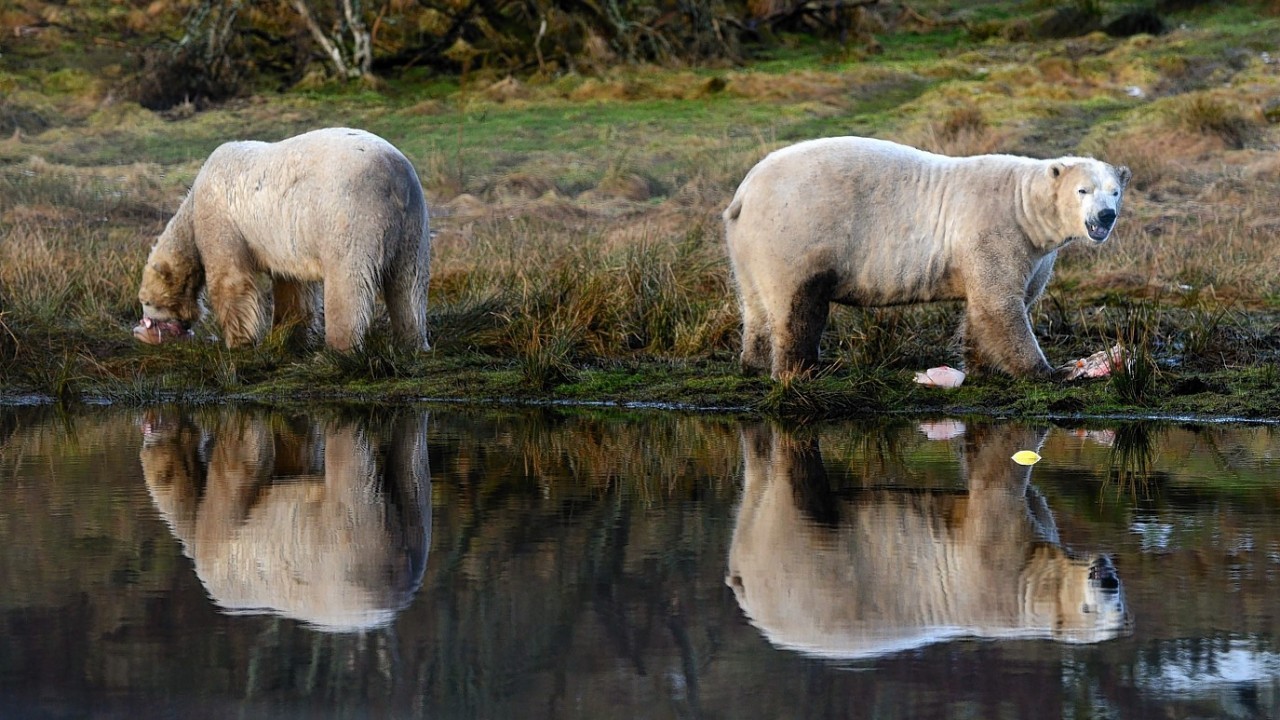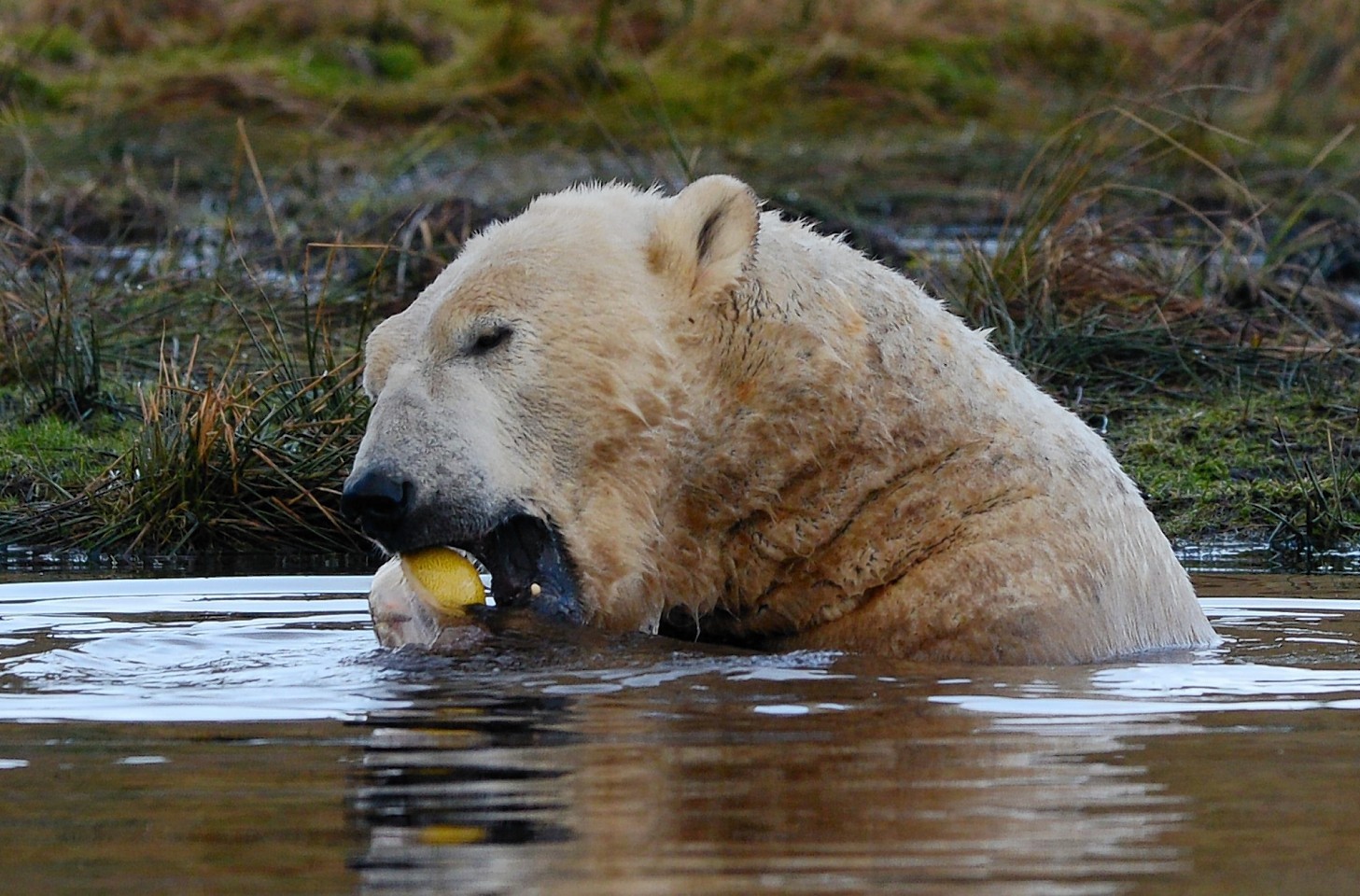Two of the north’s most famous residents were celebrating yesterday on the eve of International Polar Bear Day.
Scotland’s only polar bears, Walker and Arktos, marked the special occasion by chomping into their favourite foods frozen in blocks of ice at their home in the Highland Wildlife Park near Aviemore.
Arktos, who is seven and Walker, who is six, share the six acre enclosure at the park.
The boys were given ice disks containing fish, carrots and meat that were placed on land and in the play ponds to help encourage natural behaviour.
The enrichment helps to keep the animals entertained while highlighting the plight of polar bears in the wild.
Polar bears are currently classified as vulnerable on the IUCN Red List as they rely almost entirely on sea ice as a hunting platform. But as the temperature in the Artic steadily rises due to climate change, the quality of the sea ice decreases.
Without these platforms polar bears would be unable to put on enough weight to see them through the summer fasting period or to raise cubs.
A female polar bear will be joining the Highland pair in the spring, with the hope that soon cubs will be on the way. Polar bear cubs have not been bred in Scotland since 1992.
Douglas Richardson, head of living collections at the park, said: “Our current project, constructing a totally separate female polar bear enclosure, is a completely new approach to captive polar bear husbandry so as to enhance breeding success.
“As the wild population of polar bears deteriorates, the greater the chances are that the well managed captive population may be a crucial conservation asset in the future that could be used to enhance diminished and fragmented wild numbers.
“We are unlikely to alter our lifestyles to negate the worst effects of a rapidly changing and warming climate. Maintaining a healthy captive population of captive polar bears many not help, but it at least gives us additional option with which to try and mitigate the worst of what is coming for the species.”
The bears are the largest living land carnivore and can be up to 11ft tall when standing on their hind legs.
